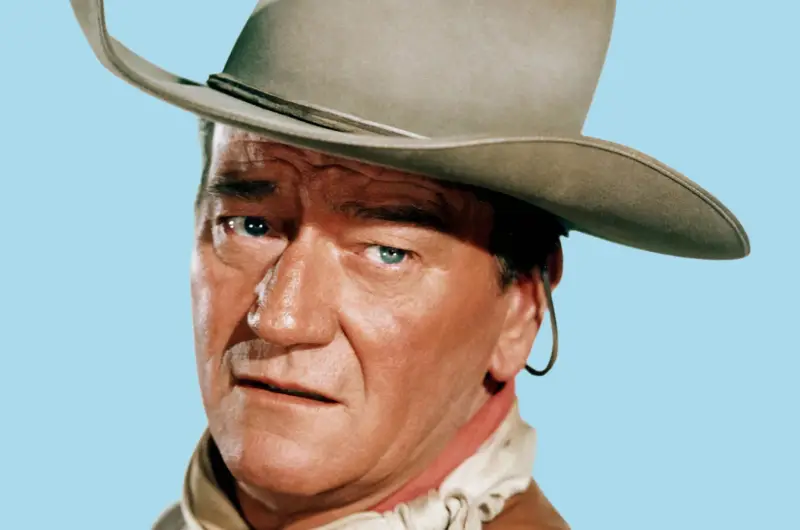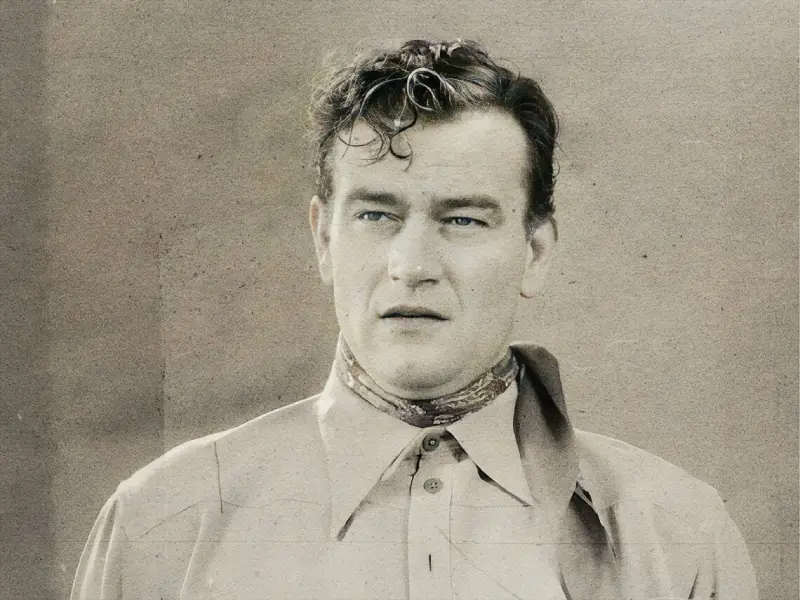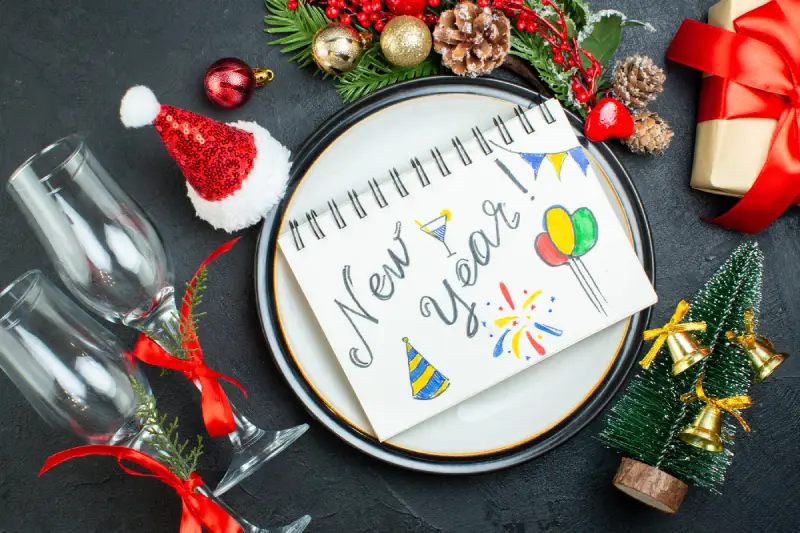Presenting the renowned John Wayne conjures up ideas of the rough and tumble of the American West, the brave hero on horseback, and the pinnacle of manhood during the golden age of Hollywood. John Wayne, born Marion Morrison in 1907, rose above his modest upbringing to become a timeless figure in American cinema. Wayne played legendary roles that captured the essence of the American spirit and the Wild West throughout his distinguished career.
From his debut performance in “Stagecoach” to his Academy Award-winning one in “True Grit,” John Wayne enthralled viewers with his imposing presence, unshakeable will, and irresistible charisma. Wayne’s fervent patriotism, conservative beliefs, and unrelenting devotion to his art have a lasting impression on the entertainment business and the cultural environment even outside of the silver screen. In this exploration of John Wayne’s life and legacy, we delve into ten essential aspects of his remarkable journey, shedding light on the man behind the myth and celebrating the enduring impact of his cinematic legacy.
Early Life:
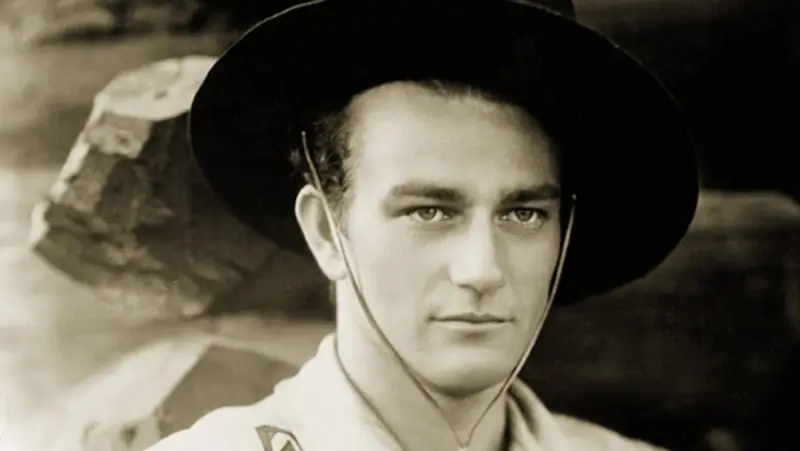
Born Marion Robert Morrison on May 26, 1907, in Winterset, Iowa, John Wayne’s adventure officially started. He was the child of Mary Alberta Brown and Clyde Leonard Morrison. After his parent’s marriage failed, the family relocated to California when he was a little child and settled in the greater Los Angeles region. Marion Morrison, who was raised in Glendale, California, had early indications of his potential for greatness. He was a standout student at Glendale High School, where he was very good at football and academics. His aspirations to be an athlete were dashed by an accident, but it paved the way for a new career when he started working at a nearby film studio.
He made friends with filmmaker John Ford at the studio, and Ford went on to play a significant role in influencing his career. In addition to suggesting assignments for him, Ford advised using the screen name “John Wayne,” a move that would solidify his legacy in the film industry. Wayne had early setbacks in the film business, but his tenacity and work ethic carried him through. His early life set the stage for the legendary character he would later play on screen, and it also signaled the start of an incredible journey that would make him one of the most recognizable characters in American film history.
Career Beginnings:
Despite modest beginnings, John Wayne’s Hollywood career evolved into a remarkable journey defined by iconic performances and enduring contributions to the motion picture industry. The epic Western film “The Big Trail,” directed by Raoul Walsh in 1930, gave him his big break. Wayne gave a strong performance, but the big-budget picture failed to make a profit, and Wayne’s career temporarily stagnated.
Wayne remained steadfast and kept going after acting roles. The key to rekindling his career was his connection with filmmaker John Ford. In 1939, Ford gave Wayne a significant role in the groundbreaking Western “Stagecoach,” reviving the genre and catapulting Wayne to stardom. His depiction of the brutal and valiant Ringo Kid captivated audiences and established him as the quintessential cowboy hero.
“Stagecoach” was the start of a successful working relationship between Wayne and Ford, which produced a string of critically praised pictures that exhibited Wayne’s abilities and cemented his place in Hollywood history. Wayne was featured in several popular Westerns in the 1940s and 1950s, such as “Red River” (1948) and “The Searchers” (1956), which helped to solidify his status as the pinnacle of American manhood and frontier spirit.
Wayne exhibited his flexibility by playing parts in different genres outside Westerns, which were his specialty, such as military films like “The Longest Day” (1962) and “The Green Berets” (1968). His captivating performances and commanding presence won him over audiences worldwide, garnering him recognition and making him one of his generation’s most well-known and adored performers. John Wayne’s career beginnings may have been modest. Still, his talent, determination, and enduring appeal ensured that he would leave an indelible mark on the history of cinema, shaping the landscape of American film for generations to come.
Breakthrough Role:
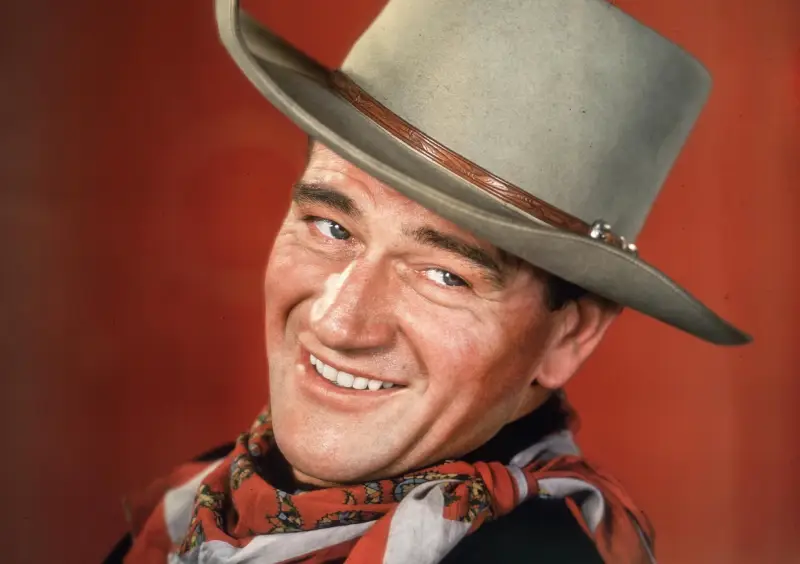
John Wayne’s big break came in the iconic Western “Stagecoach,” directed by John Ford, in 1939. Wayne plays the morally pure and stoic bandit Ringo Kid in the movie, who is seeking retribution for his family’s murder. “Stagecoach” is widely considered a seminal work in the Western genre and is recognized for having revived the genre’s prominence in Hollywood.
Wayne captivated audiences and reviewers with his depiction of the Ringo Kid, showcasing his raw charm, commanding presence, and natural charisma. Viewers were moved by Wayne’s character’s transformation from a criminal looking for punishment to a selfless person prepared to give his life to save others, cementing his status as the prototypical cowboy hero.
In addition to making Wayne a household name, “Stagecoach” cemented his friendship with director John Ford, with whom he would work on many critically acclaimed films throughout his career. In addition to raising Wayne’s profile in Hollywood, “Stagecoach”‘s triumph cleared the path for him to establish himself as one of the most recognizable and lasting characters in American film history. John Wayne established himself as a versatile actor with “Stagecoach,” demonstrating his ability to give his characters depth and subtlety. This performance laid the groundwork for a career spanning decades and leaving an enduring impression on the history of film.
Iconic Roles:
![]()
The famous roles he played, which encapsulated the spirit of the American frontier and captivated audiences around the globe, marked John Wayne’s remarkable career. These are some of his most enduring and well-known roles:
The Ringo Kid in “Stagecoach” (1939): This role marked Wayne’s breakthrough and established him as the quintessential cowboy hero. The Ringo Kid is a stoic outlaw seeking redemption and justice, showcasing Wayne’s rugged charm and charisma.
Thomas Dunson in “Red River” (1948): Wayne portrayed a cattle rancher leading a dangerous drive along the Chisholm Trail. His portrayal of Dunson highlighted his commanding presence and leadership qualities.
Ethan Edwards in “The Searchers” (1956): Considered a standout in Wayne’s repertoire, he portrayed a complex Civil War veteran embarking on a mission to save his abducted niece from Comanche Indians. This role exemplified Wayne’s versatility and profound acting prowess.
Rooster Cogburn in “True Grit” (1969): This role clinched Wayne his sole Academy Award for Best Actor. He portrayed a tough and grizzled U.S. Marshal hired by a young girl to track down her father’s killer, showcasing his ability to blend toughness with humor and humanity.
Sean Thornton in “The Quiet Man” (1952): Wayne displayed his romantic side in this John Ford-directed film set in Ireland. As an American ex-boxer returning to his Irish homeland, Wayne’s portrayal of Thornton showcased his softer, more vulnerable side.
Sgt. John M. Stryker in “Sands of Iwo Jima” (1949): Wayne played a tough but compassionate Marine Corps sergeant leading his men through the harrowing Battle of Iwo Jima during World War II. This role showcased Wayne’s ability to embody the spirit of American patriotism and military heroism.
Cole Thornton in “El Dorado” (1966): In this Western classic, Wayne portrayed a gunslinger with a troubled past who reluctantly joins a sheriff and a drunken deputy to defend a rancher against a ruthless land baron.
Military Service:
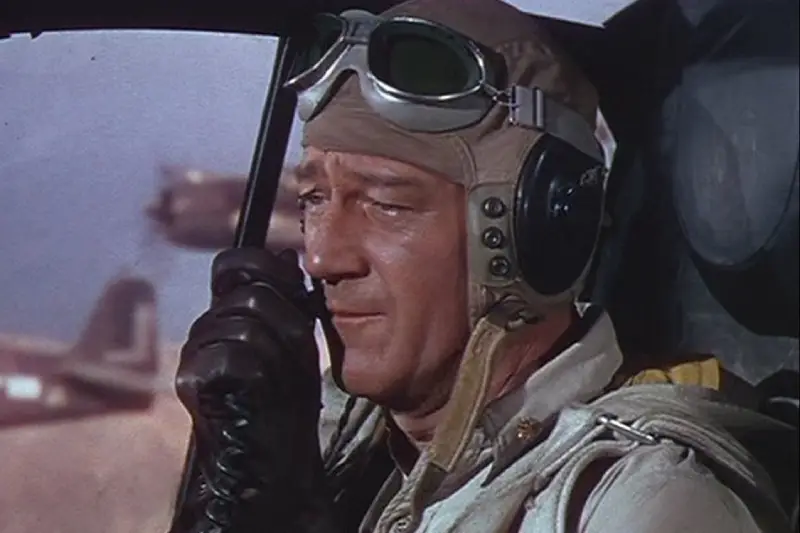
The subject of John Wayne’s military experience occasionally causes misunderstanding and fascination. Despite being frequently linked to patriotic roles and emerging as a legendary representation of American manhood, Wayne’s absolute World War II military duty was restricted by a number of factors. Wayne was motivated to serve his nation, but obstacles kept him from participating in battles. Wayne was exempt from conscription since he was in his thirties and was a father of four children when World War II started. He also had a football injury that resulted in a 4-F rating, indicating that he could not serve in the military.
Nonetheless, Wayne made essential contributions to the war effort despite these obstacles. With his larger-than-life presence, he entertained troops stationed overseas and raised morale throughout his many USO visits. Wayne also produced and was featured in several patriotic films that mobilized people in favor of the war. Wayne was unable to serve in the conventional sense, but he remained steadfast in his support of the armed forces and in advancing American ideals during the conflict. His status as an on-screen and off-screen embodiment of American patriotism was solidified by his efforts to encourage and uplift soldiers during a pivotal period in the country’s history.
Political Views:
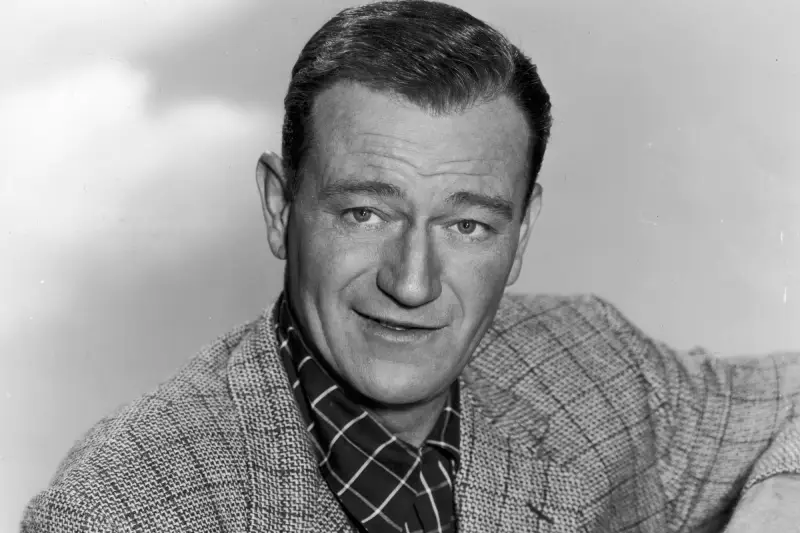
Throughout his life, John Wayne publicly shared his conservative political beliefs, which earned him notoriety. He was an outspoken advocate for conservative leaders and causes and a devout opponent of communism. The following are important details about John Wayne’s political beliefs:
Anti-Communism: Wayne actively participated in the conservative Motion Picture Alliance for the Preservation of American Ideals and was a fierce opponent of communism. Because he thought that communism was a danger to democracy and American ideals, he spoke out against it using his position.
Support for Conservative Politicians: Wayne was a fervent Republican Party supporter of conservative politicians. He actively supported presidential candidates Richard Nixon and Ronald Reagan, officially endorsing both.
Patriotism: Wayne’s solid national pride informed his political beliefs. He supported the American Dream, individuality, independence, and the concept that America is exceptional.
Criticism of Liberalism: Wayne was critical of liberal ideologies and policies, particularly those he viewed as undermining traditional American values. He often spoke out against what he perceived as excessive government intervention and social welfare programs.
Controversy: Wayne’s outspoken political views occasionally sparked controversy, particularly during the turbulent social and political climate of the 1960s and 1970s. His support for the Vietnam War and opposition to the civil rights movement drew criticism from some quarters.
Personal Life:
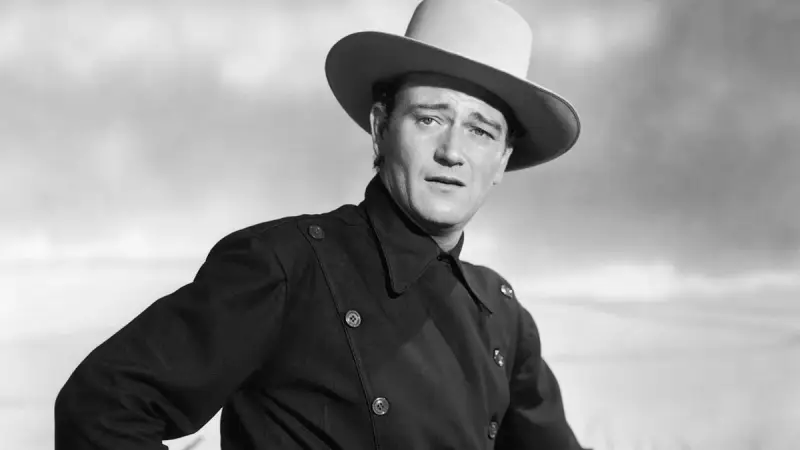
John Wayne’s private life was as colorful and engaging as his character on television. The following are significant facets of his personal life:
Marriages and Family: Wayne was married three times. His first marriage was to Josephine Saenz in 1933, with whom he had four children: Michael, Mary Antonia (Toni), Patrick, and Melinda. The marriage ended in divorce in 1945. Subsequently, he tied the knot with actress Esperanza “Chata” Baur in 1946, only for the marriage to end in divorce in 1954. In 1954, he married for the third time to Pilar Pallete, which lasted until his passing in 1979. During their union, they were blessed with three children: Aissa, John Ethan, and Marisa.
Health Issues: Wayne faced various health challenges throughout his life. He was a heavy smoker, which led to health issues later in life, including heart disease and lung cancer. He underwent surgery for stomach cancer in 1964 and later battled the disease until his death.
Philanthropy: Despite his tough on-screen persona, Wayne was renowned for his generosity and philanthropic deeds. He wholeheartedly backed numerous charitable causes, especially those focused on cancer research and treatment, following his personal fight against the disease.
Hobbies and Interests: Apart from his acting endeavors, Wayne pursued a diverse range of hobbies and interests. He relished being an enthusiastic sportsman, finding joy in pursuits like hunting, fishing, and golf. Additionally, his love for yachting shone through as he possessed multiple boats across his lifetime.
Ranching: Wayne had a deep connection to the American West and spent much of his free time on his ranches. He owned several properties, including a 40,000-acre ranch in Arizona called the “26 Bar Ranch,” where he indulged his love for the outdoors and Western lifestyle.
Friendships: Wayne had many close friendships within the entertainment industry, including with directors John Ford and Howard Hawks and fellow actors such as Ward Bond and Maureen O’Hara. These friendships often extended beyond the screen and were essential to his personal life.
Health Issues:

Throughout his life, John Wayne dealt with several health problems, some of which were made worse by his way of living. The following are the primary health problems he faced:
Smoking-Related Illnesses: Wayne was a heavy smoker throughout much of his life, a habit that eventually took a toll on his health. He was diagnosed with lung cancer in 1964, which led to the surgical removal of his entire left lung and several ribs. Despite the surgery, Wayne continued to smoke for several years before eventually quitting.
Heart Disease: In addition to lung cancer, Wayne also struggled with heart disease. Smoking, along with other factors such as his high-stress lifestyle and a diet rich in fatty foods, contributed to his heart problems. He underwent multiple heart surgeries over the years to address various cardiovascular issues.
Stomach Cancer: Wayne’s health challenges continued when he was diagnosed with stomach cancer in the early 1970s. He underwent surgery to remove his stomach, but the cancer had already spread, and his prognosis was grim. Despite his declining health, Wayne remained active in his career and continued to work on film projects until his death.
Other Ailments: Throughout his life, Wayne also faced other health issues common among older adults, such as arthritis and back pain. These conditions, combined with his more severe illnesses, likely contributed to his overall decline in health in his later years.
Legacy:
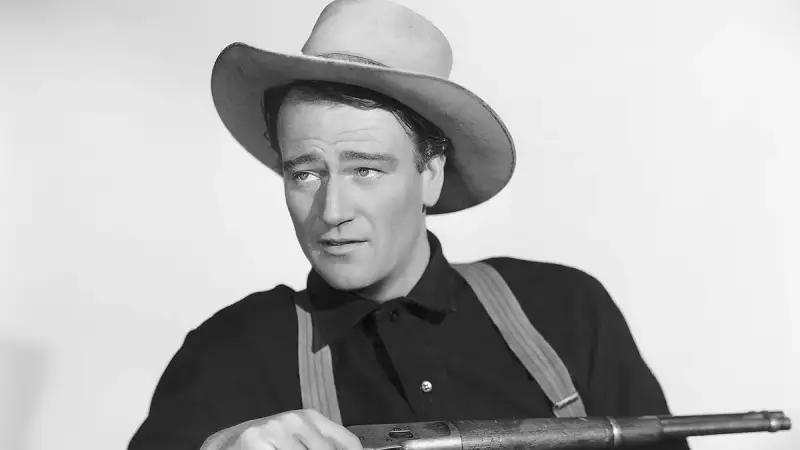
The influence of John Wayne goes far beyond his reputation as a Hollywood luminary. Listed below are some salient features of his lasting legacy:
Cinematic Impact: John Wayne made over 170 film appearances throughout his six-decade career. His brutal, heroic portrayals of American Western heroes made him a household name, drawing in viewers from all over the world. His legendary performances in films like “Stagecoach,” “The Searchers,” and “True Grit” have irrevocably altered the course of film history.
American Masculine Symbol: Wayne personified the ideal American hero, displaying bravery, strength, and tenacity on and off screen. He became a symbol of American masculinity and influenced the perception of the cowboy hero for future generations with his exaggerated character and rugged good looks.
Patriotism and Nationalism: Wayne was a vocal patriot who celebrated American values and ideals throughout his career. His portrayal of military heroes in films such as “Sands of Iwo Jima” and “The Longest Day” resonated with audiences during the war and heightened national pride.
Cultural Influence: Wayne’s influence transcended the film world, permeating popular culture and leaving an indelible mark on American society. His distinctive voice, mannerisms, and catchphrases became iconic symbols of the American West and are still referenced and parodied in contemporary media.
Philanthropy: Despite his tough on-screen image, Wayne was known for his generosity and philanthropy. He supported various charitable causes, particularly those related to cancer research and treatment, after his battle with the disease.
Conservative Legacy: Wayne’s conservative political views and staunch anti-communism also contributed to his legacy. He was an active member of conservative organizations and publicly endorsed conservative politicians, leaving a lasting impact on American politics and culture.
Honors and Recognition: John Wayne was honored with multiple accolades during his illustrious career, notably winning an Academy Award for Best Actor for his performance in “True Grit.” Furthermore, he was posthumously awarded the Presidential Medal of Freedom in 1980, the highest civilian distinction in the United States.
Honors and Awards:
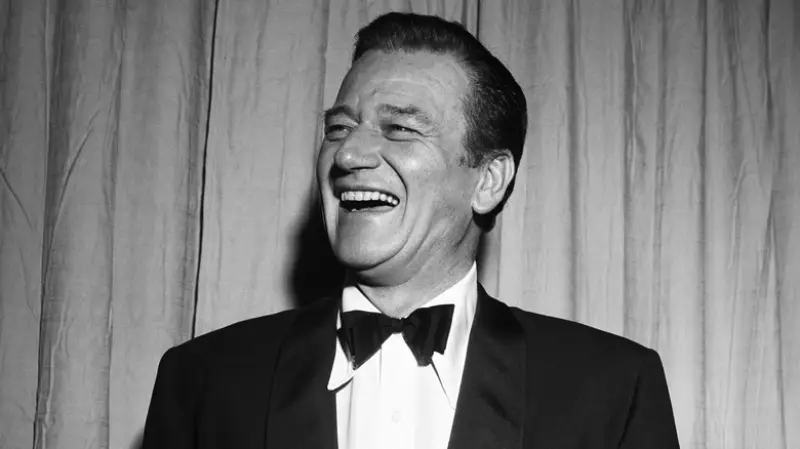
Throughout his distinguished career, John Wayne was recognized for his services to the film business and his influence on American society with many honors and accolades. Among the most noteworthy accolades and distinctions conferred upon him are:
Academy Award: Wayne won the Academy Award for Best Actor for his role as Rooster Cogburn in the 1969 film “True Grit.” This was his only Oscar win, although he received nominations for his performances in “Sands of Iwo Jima” (1949) and “The Alamo” (1960).
Golden Globe Awards: Wayne received several Golden Globe Awards throughout his career, including the Cecil B. DeMille Award for Lifetime Achievement in 1966. He also won the Golden Globe for Best Actor in a Motion Picture Drama for “True Grit” (1969).
Presidential Medal of Freedom: Wayne was posthumously awarded the Presidential Medal of Freedom, the highest civilian honor in the United States, by President Jimmy Carter in 1980. The award recognized his contributions to American cinema and his support for the military.
Hollywood Walk of Fame: In 1960, John Wayne was honored with a star on the Hollywood Walk of Fame in recognition of his achievements in the film industry. Located at 1541 Vine Street, his star remains a popular tourist attraction.
National Cowboy & Western Heritage Museum: Wayne was inducted into the National Cowboy & Western Heritage Museum’s Hall of Great Western Performers in 1974, cementing his legacy as an iconic figure in the Western genre.
American Film Institute: In In 1999, the American Film Institute bestowed upon John Wayne the 13th position on its roster of the Greatest Male Screen Legends of Classic Hollywood Cinema, acknowledging his lasting influence on the silver screen.
Conclusion
In summary, John Wayne has enormously influenced American film and society. With a career spanning more than six decades and an enduring impact on the film industry and beyond, Wayne’s story began with modest origins in Winterset, Iowa. It continued to rise to fame as a Hollywood icon. As an actor, Wayne enthralled audiences with his legendary takes on challenging, courageous characters in Westerns and war films, cementing his reputation as the archetypal American hero. His legendary character, unshakable patriotism, and dedication to American values struck a chord with audiences everywhere, making him one of the most well-known and adored characters in movie history.
His charity, conservative political beliefs, and personal health challenges further molded Wayne’s reputation off-screen. Despite obstacles, he never wavered in his commitment to his craft, his country, and his values. Today, John Wayne’s legacy endures through his timeless performances, his enduring influence on popular culture, and the countless lives he touched both on and off the screen. As we reflect on his remarkable life and career, we celebrate the enduring legacy of a true Hollywood icon and American legend.
